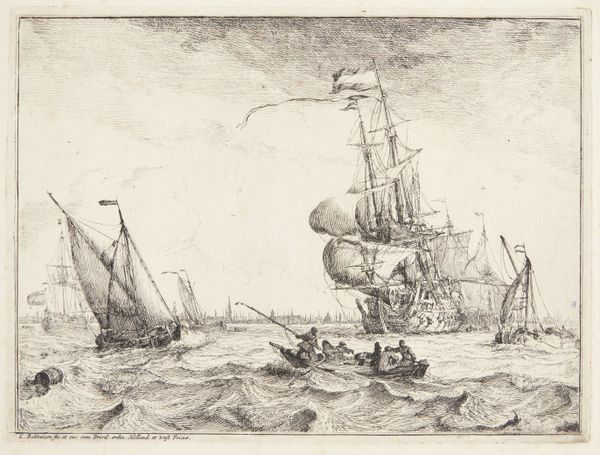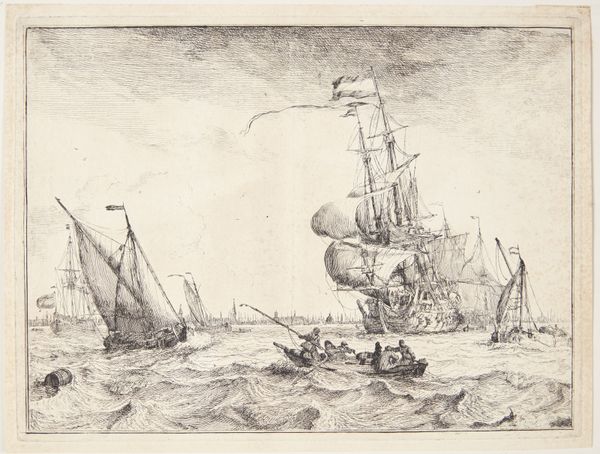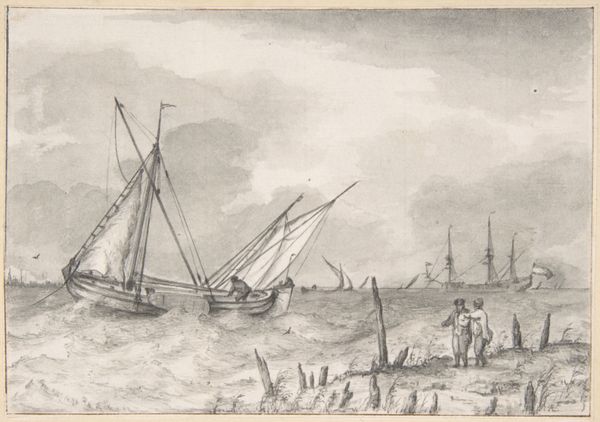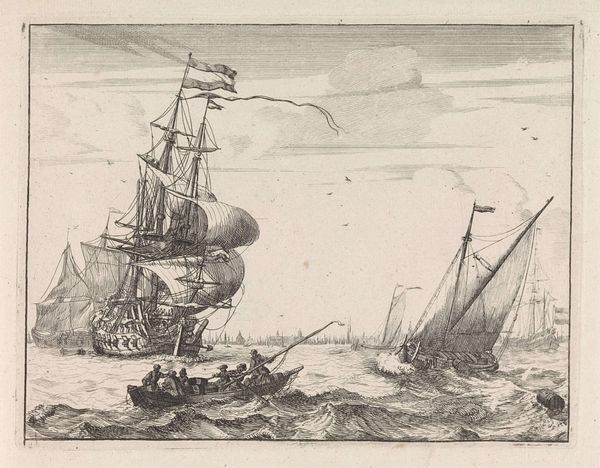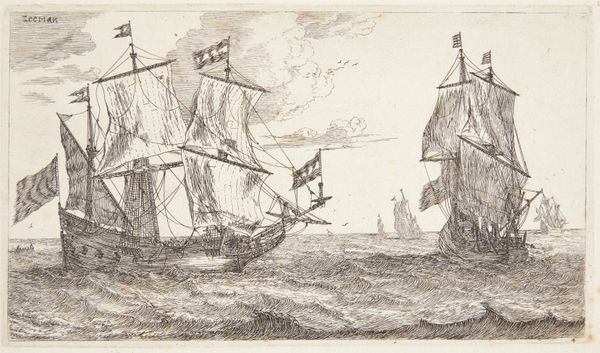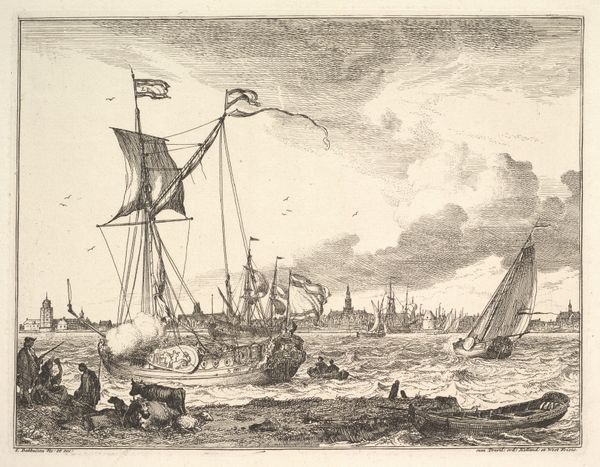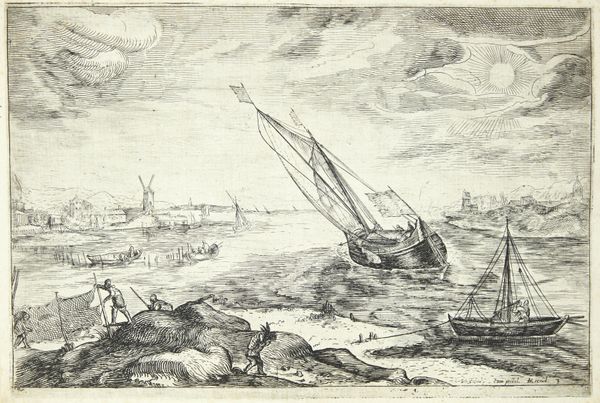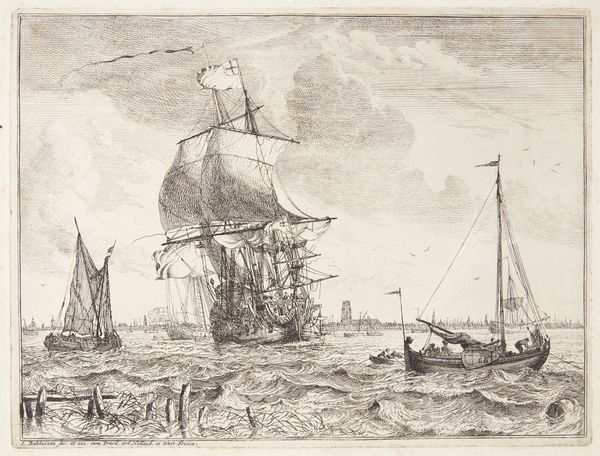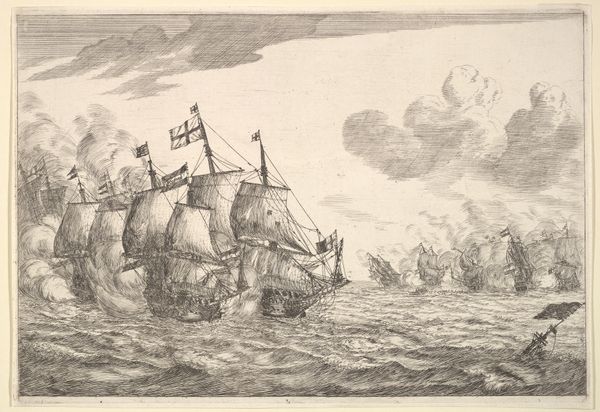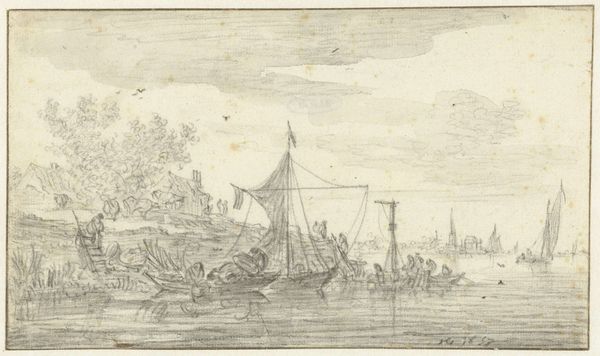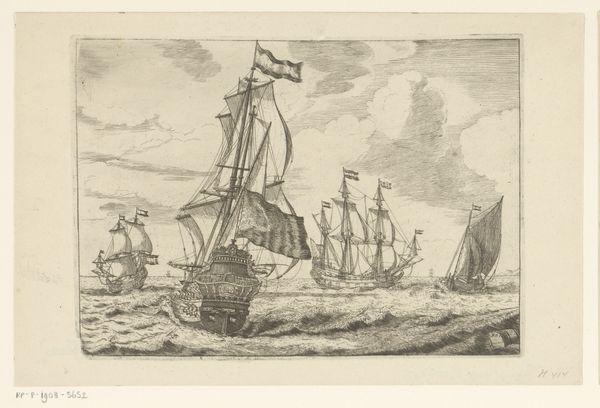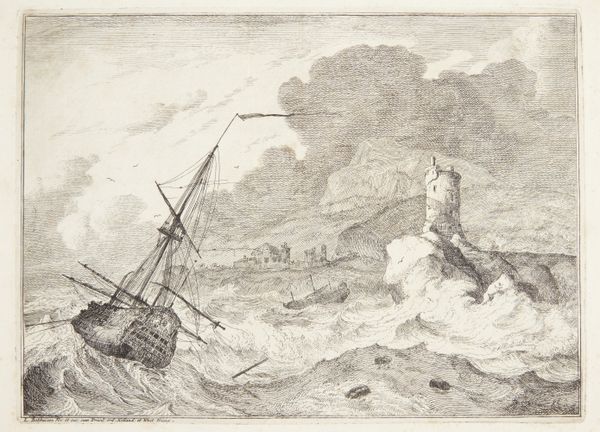
print, etching
#
baroque
# print
#
etching
#
landscape
Dimensions: 172 mm (height) x 235 mm (width) (plademaal)
Editor: This is "Ships off the Dutch Coast," a 1701 etching by Ludolf Bakhuizen. It's a bustling seascape filled with ships struggling against choppy waters. The detail is amazing for an etching; you can almost feel the spray. What can you tell me about the story behind its creation? Curator: The "story" inheres not just in what’s represented, but in *how* it’s made and circulated. Consider the print medium itself. Etchings like this weren’t just aesthetic objects. They were commodities, reflecting and fueling the Dutch Republic’s maritime power. Bakhuizen, here, wasn't merely depicting ships; he was participating in an economy of image production. How do you think the rise of printmaking impacted Dutch maritime trade representation? Editor: So, it’s less about artistic expression and more about...Dutch capitalism? How does focusing on the etching itself – the labor, the materials – change our interpretation? Curator: Exactly! Before the 18th Century, there was high demand for etchings that democratized art, beyond wealthy elites who commissioned works of fine art such as oil on canvas, as trade and maritime activity in Holland soared, creating opportunities to commodify these widely-demanded works of art. Editor: I never really considered the role of printmaking as a driver for commerce. Thanks! Curator: And I find myself pondering the lives of the sailors represented in those ships. Perhaps this etching is also a sobering reflection of the human cost of maritime expansion.
Comments
No comments
Be the first to comment and join the conversation on the ultimate creative platform.
